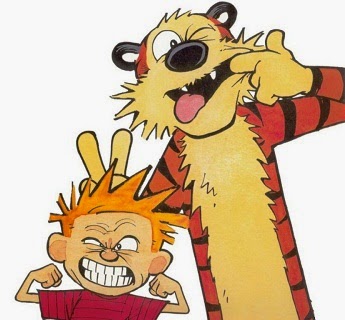Let's reacquaint ourselves with the combatants:
THE DOCTOR
The Doctor was created by Sydney Newman for the 1963 television series "Doctor Who." Newman was one of a large team of writers and producers who felt it would be a good idea for the BBC to have its own science fiction series, and created just that. Originally meant to be an educational show, the projected budget reigned in much of the ambitious ideas that ironically became staples of the show (such as the TARDIS's Chameleon Circuit being stuck on "60's Police Box," courtesy of staff writer Anthony Coburn).
In his original appearance, The Doctor was decidedly unsympathetic; an untrustworthy supporting character in his own show. However, he mellowed out somewhat as the series ran on and he became more and more of a cultural icon and hero to the younger viewers.
The Doctor was portrayed originally by William Hartnell. Known for playing tough army characters, it was actually one of his more sensitive roles that lead to his being cast. Unfortunately, by 1965, Hartnell was in the early stages of arteriosclorosis, and it was clear that he couldn't keep going for much longer. In 1966, producer Innes Lloyd and story editor Gerry Davis came up with a way to switch Harntell out - The Doctor was an alien being, and would have the power of "renewal" (later changed to "Regeneration."). Using this model, the character could have new actors whenever it was needed without impeding the story. Each actor has brought bits of themselves into the role, and each
personality is slightly different, but the common thread is never unlike
the first: at least a little mad, at least a little arrogant, and
ultimately trying to do the right thing.
The show ran until 1989 when a poor time slot caused viewers to drop too low for the BBC to keep it up. After a failed USA revival in 1996, the show gained new heights of popularity in 2005 with its triumphant return to the BBC.
After Hartnell, The Doctor's regenerations have been played by, in order: Patrick Troughton, Jon Pertwee, Tom Baker, Peter Davison, Colin Baker (no relation), Sylvester McCoy, Paul McGann, Christopher Eccleston, David Tennant, Matt Smith, and Peter Capaldi. Capaldi and Colin Baker had guest-starred on the show as unrelated supporting roles before playing The Doctor himself. John Hurt also featured in the 50th anniversary special as a psuedo-regeneration between 8 and 9 active during the Time War, known in official media as "The War Doctor."
In two non-canon film adaptations in the late 1960's, The Doctor was portrayed by Peter Cushing. In audio appearances, in addition to some of the canon actors, The Doctor has been played by Derek Jacobi, David Warner, Geoffrey Bayldon, David Collings, Michael Jayston, and Arabella Weir. Richard E. Grant also voiced alternate versions of Doctors 9 and 10 for audio and animation. I'm sure I'm missing even more.
CALVIN AND HOBBES
Calvin and Hobbes were created by Bill Watterson for his 1986 newspaper comic strip of the same name. Watterson turned to cartooning when he realized he hated the advertizing business, and sent idea after idea out to the syndicates until one of them latched onto side characters of a little boy and a stuffed tiger. Watterson restructured the strip around them and further developed their characters.
Calvin was named after theologian John Calvin, who believed in predestination. Though Calvin does believe he has a grand destiny, his character's humor comes from his mature verbosity and creativity juxtaposed with him being an extremely bratty six-year old. Much of Calvin's stories are based both on Watterson's childhood (though he maintains he was never THAT bad), as well as his adult self still working out the meaning of things.
Hobbes was named after philosopher Thomas Hobbes, who had a dim view of human nature. Hobbes shares this, though his personality and look were more inspired by Watterson's cat Sprite. He was also one of the central gimmick: To Calvin, he's a real walking talking tiger, and to everyone else he's a stuffed animal. Watterson has stated that Hobbes is neither a doll who comes to life nor a figment of Calvin's imagination. Rather, Hobbes is Watterson's take on the subjective nature of reality; we all see things differently, so who's to say who is right or wrong? There are enough stories that make good cases for Hobbes' autonomy.
The strip only ran for ten years, but in that short time it managed to become one of the most popular and celebrated newspaper strips of all time, and influenced an entire generation.
Calin and Hobbes was never adapted into any other medium, due mainly to Watterson's extreme dislike of merchandising. He once briefly considered an animated adaptation, but couldn't get himself to feel comfortable with someone else's voice coming out of the characters' mouths (both literally and figuratively).
Final Thoughts
WHY DO I HAVE TO CHOOSE?!?!?!?!?! Oh yeah, because I started this thing in the first place. Anyway, The Doctor's been around longer, and is far more in the modern public's consciousness. However, Calvin and Hobbes are almost concentrated nostalgia, and a pinnacle of their medium.
As always, make sure you're viewing the WEB version of the site and vote in the
poll on the right-hand side of the screen. Poll closes Friday, and
results posted on Saturday. Feel free to discuss your pick in the
comments below.


Actually, the films aren't technically non-canon, 'cause Doctor Who actually doesn't have a canon at all. It's kinda great that way.
ReplyDeleteAlso, C&H forever. Love ya, Doc, but they've got my heart.